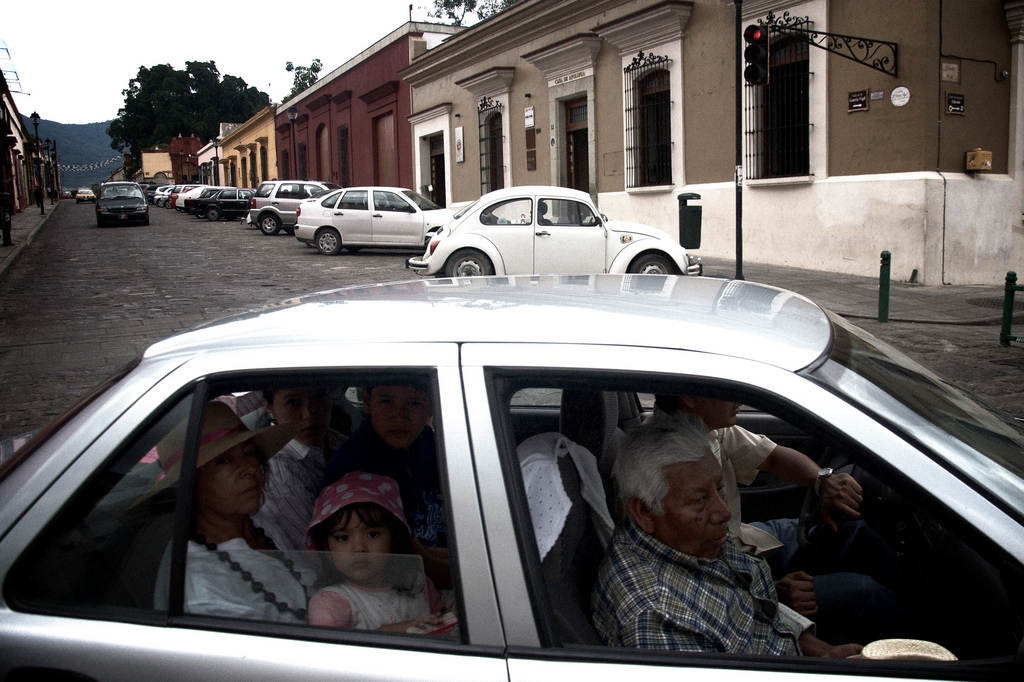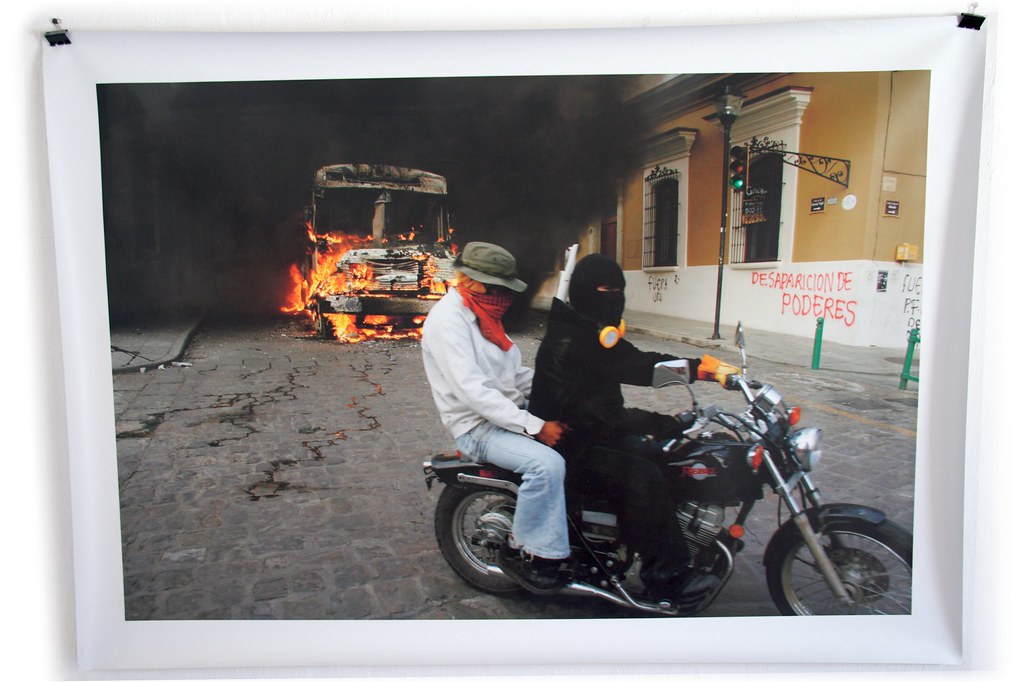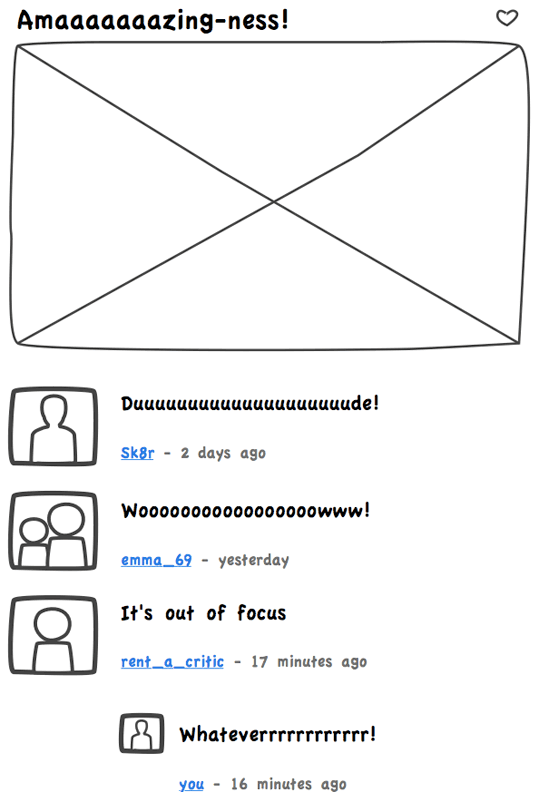
Taken on 2nd August, 2009 in La Paz, Oaxaca City, Oaxaca, Mexico. Nikon D90, Exposure 1/1600s at f/3.5, Focal Length 18mm, ISO Speed 400. Show on Flickr.
I've been slowly getting through Susan Sontag's On Photography for quite a while now.
Yeah, I'm a slow reader, but I've been particularly taking my time with Sontag because I've enjoyed reflecting on how the essays, first published in 1977, can elucidate our interpretation of photographs online, how they apply to the work I do for this blog, and how best to approach future projects.

Photograph by Jorge Santiago. As part of "Memorial De Agravios - Exhibición de una Memoria en Tránsito". Taken during Oaxaca Uprising, Mexico, 2006.
A photograph changes according to the context in which it is seen? on a contact sheet, in a gallery, in a political demonstration, in a police file, in a photographic magazine, in a general news magazine, in a book, on a living-room wall. Each of these situations suggests a different use for the [photograph] but none can secure [its] meaning.
The Heroism of Vision
The web has enabled an even more prolific spread of photographic images and multiplied the range of contexts in which their meaning can be changed. To Sontag's list above we can add: as a thumbnail in a gallery, on a photo-sharing site like pix.ie or flickr, on a news site, on a photo blog, as part of a portfolio, on a political blog, as a twitter background, as a facebook profile image? I could keep going.
Social media has played a particularly strong part in re-evaluating the role of the snapshot, readily equating it with the status previously assigned to photo-journalism. When a plane crash landed in New York's Hudson River in January, Janis Krums, en route to help rescue survivors, snapped a picture on his iPhone and posted it to his twitter account. Within minutes the picture had not only been reposted thousands of times online but was being broadcast worldwide on traditional news media.
There has also been a huge shift in the way that we share our images with friends. Gone are the days of passing grubby thumb-marked 4x6? prints around a coffee table, or the iconic (and dreaded) slide show of the summer holidays. You are much more likely, these days, to glance through your friends' snaps online, without them peering over your shoulder, regaling, or bombarding, you with details and anecdotes (there can be such a thing as too much context it would seem).
Artists have also taken their photographs online, often using the same photo-sharing sites, creating their own portfolios or publishing photo blogs. The interconnectedness of the web would seem perfectly suited to produce what Sontag describes as:
?new meanings that any one picture acquires when juxtaposed?in ideal anthologies, either on museum walls or in books?with the work of other photographers.
Photographic Evangels
The Internet can, potentially, provide many more ideal anthologies and there is still much room for innovation in how we seek to create meaning around photographs.
Tagging, geotagging and other organisational structures help form groups of images relating to events, subjects, styles, places etc. These, often organic, collections in many ways hold up the paradigm of the ideal anthology but the critical unit remains the single image and the pattern for presenting that unit is well established:

This pattern has its merits for family pictures and photographs of events shared among friends but in the context of art criticism it generally falls hopelessly short.
The language in which photographs are generally evaluated is extremely meagre. Sometimes it is parasitical on the vocabulary of painting: composition, light, and so forth. More often it consists in the vaguest sort of judgements, as when photographs are praised for being subtle, or interesting, or powerful, or complex, or simple, or?a favourite?deceptively simple.
Photographic Evangels
I suggest three strands of a fresh approach to presenting photographic images online.
- Harness the dynamic relationship between context and meaning.
- Juxtapose work by different photographers in a structured and meaningful way which creates new meanings for the individual work of each.
- Break the overworked design pattern in a way that promotes constructive and creative response.
I am working to create a project along these lines and I hope others are too. Our use of photography has adapted to new technology since Sontag wrote this seminal work in 1977, the evolution will continue, it may not be televised but it most certainly will be online.

 On This Day in 2009
On This Day in 2009
 Random: Day 269
Random: Day 269
5 Comments